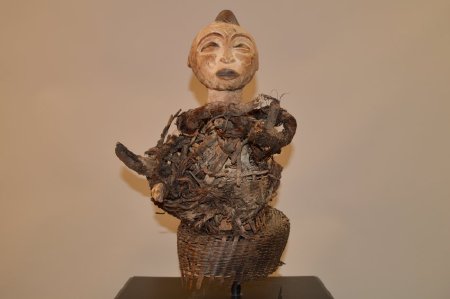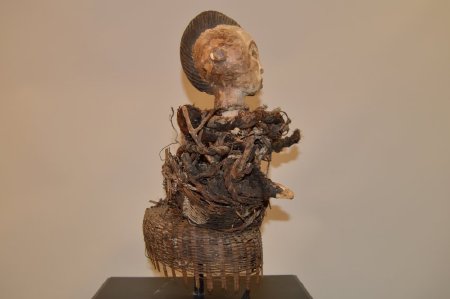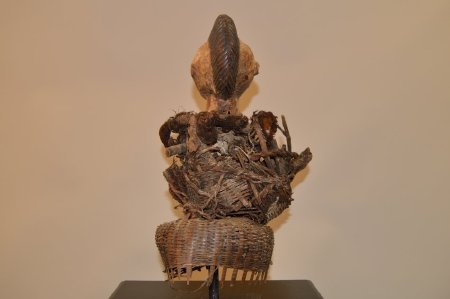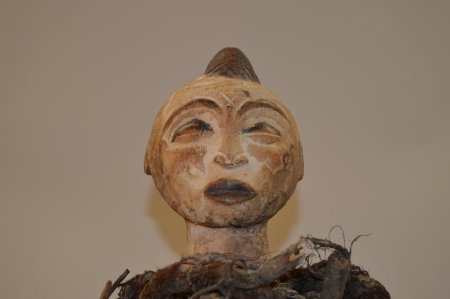Title:
Lumbo/Vuvi/Mitsogho Style Reliquary Figure
Object Name:
Figure, Reliquary, Lumbo
Other Name:
Figure, Reliquary, Vuvi / Mitsogho
Place of Origin:
Lumbo, Gabon, Africa
Provenance:
Aboriginal Indigenous Art.
Lumbo artists carved figures influenced by Punu and Kongo styles. Typically, they included reliquary figures which served as guardians of ancestors' bones, kept in baskets. Reliquaries are receptacles for ancestors' bones. Baskets were often used for such purposes and were often decorated with pigments, and adorned with other objects .The vivid features correspond to the statue's function.
Bacquart, P. 116, 118
Lumbo artists carved figures influenced by Punu and Kongo styles. Typically, they included reliquary figures which served as guardians of ancestors' bones, kept in baskets. Reliquaries are receptacles for ancestors' bones. Baskets were often used for such purposes and were often decorated with pigments, and adorned with other objects .The vivid features correspond to the statue's function.
Bacquart, P. 116, 118
Description:
Wooden reliquary figure, carved with full slightly open lips, small triangular nose and oval—shaped eyes set under double crescent—shaped eyebrows. Small scarification mark on forehead, in the shape of an X. Crescent—shaped ears, small mohawk—like coiffure atop of head. Entire figure area covered with light brown or tan pigment. Below a woven wicker or raffia basket, surrounded by cloth, woven grass, branches or sticks and other vegetal substances. Atop a second woven basket, possibly a basket lid or a basket that is missing its bottom portion.
Collection:
Guy Mace Collection, (Turblex Company)
Material:
Wood W/Paint, Cloth, Raffia and Vegetal Fibers
Used:
Ritually Used
Technique:
Carving / Weaving / Painting
Owned:
Art Department, Missouri Southern State University
Accession#:
2015.2.16





